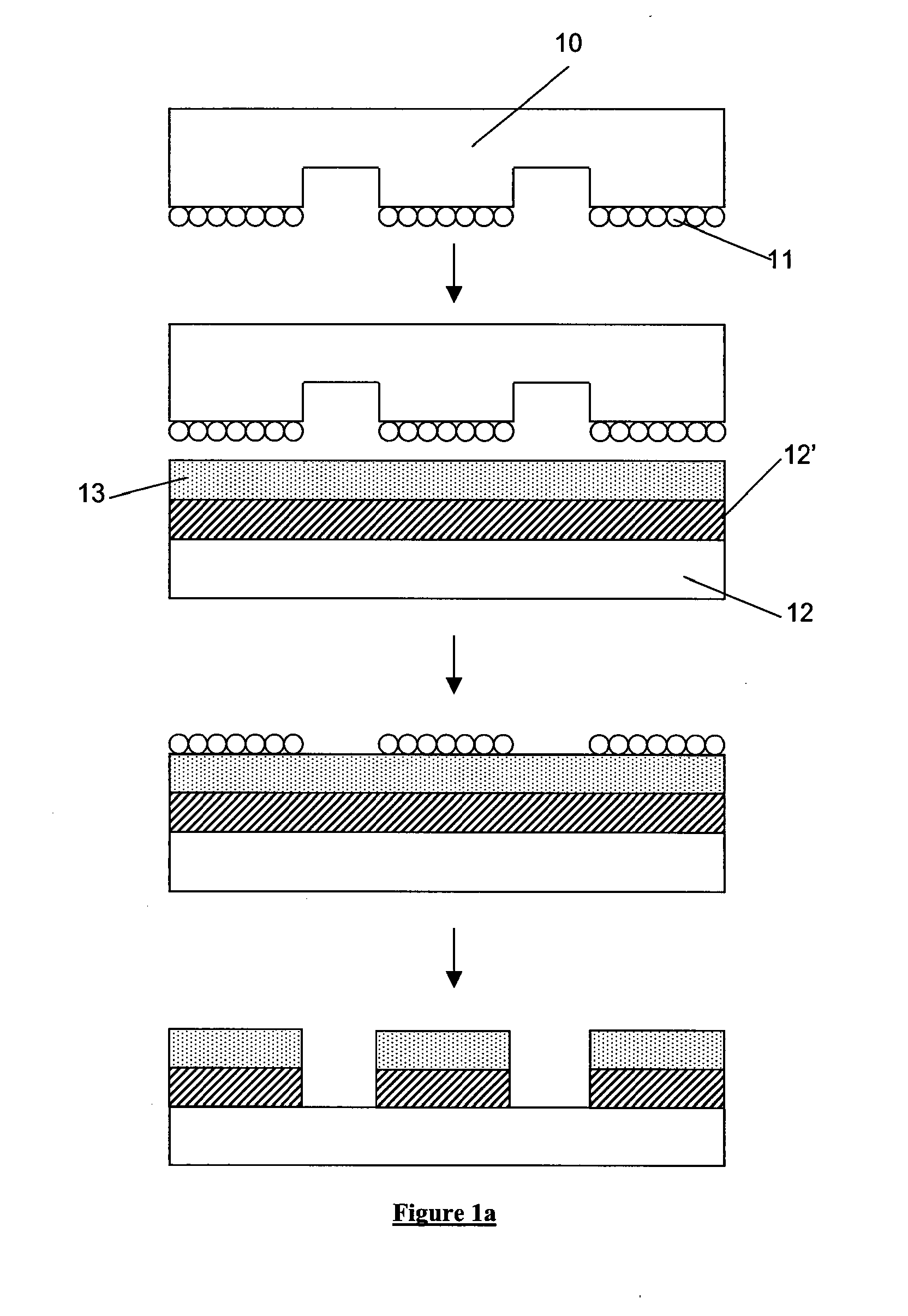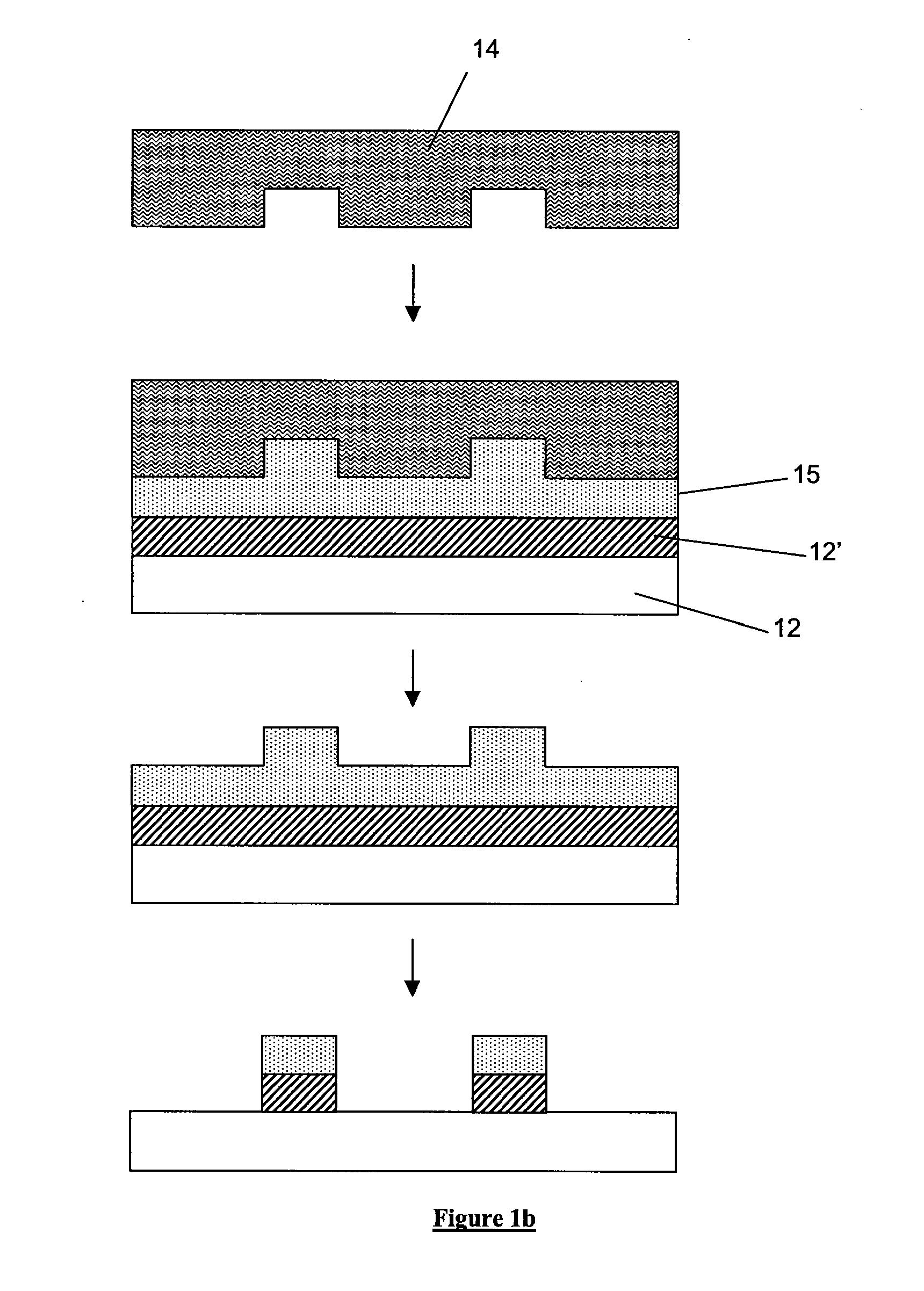Imprint lithography
- Summary
- Abstract
- Description
- Claims
- Application Information
AI Technical Summary
Benefits of technology
Problems solved by technology
Method used
Image
Examples
Embodiment Construction
There are two principal approaches to imprint lithography which will be termed generally as hot imprint lithography and UV imprint lithography. There is also a third type of “printing” lithography known as soft lithography. Examples of these are illustrated in FIGS. 1a to 1c.
FIG. 1a schematically depicts the soft lithography process which involves transferring a layer of molecules 11 (typically an ink such as a thiol) from a flexible template 10 (typically fabricated from polydimethylsiloxane (PDMS)) onto a resist layer 13 which is supported upon a substrate 12 and planarization and transfer layer 12′. The template 10 has a pattern of features on its surface, the molecular layer being disposed upon the features. When the template is pressed against the resist layer, the layer of molecules 11 stick to the resist. Upon removal of the template from the resist, the layer of molecules 11 stick to the resist, the residual layer of resist is etched such that the areas of the resist not co...
PUM
 Login to view more
Login to view more Abstract
Description
Claims
Application Information
 Login to view more
Login to view more - R&D Engineer
- R&D Manager
- IP Professional
- Industry Leading Data Capabilities
- Powerful AI technology
- Patent DNA Extraction
Browse by: Latest US Patents, China's latest patents, Technical Efficacy Thesaurus, Application Domain, Technology Topic.
© 2024 PatSnap. All rights reserved.Legal|Privacy policy|Modern Slavery Act Transparency Statement|Sitemap



